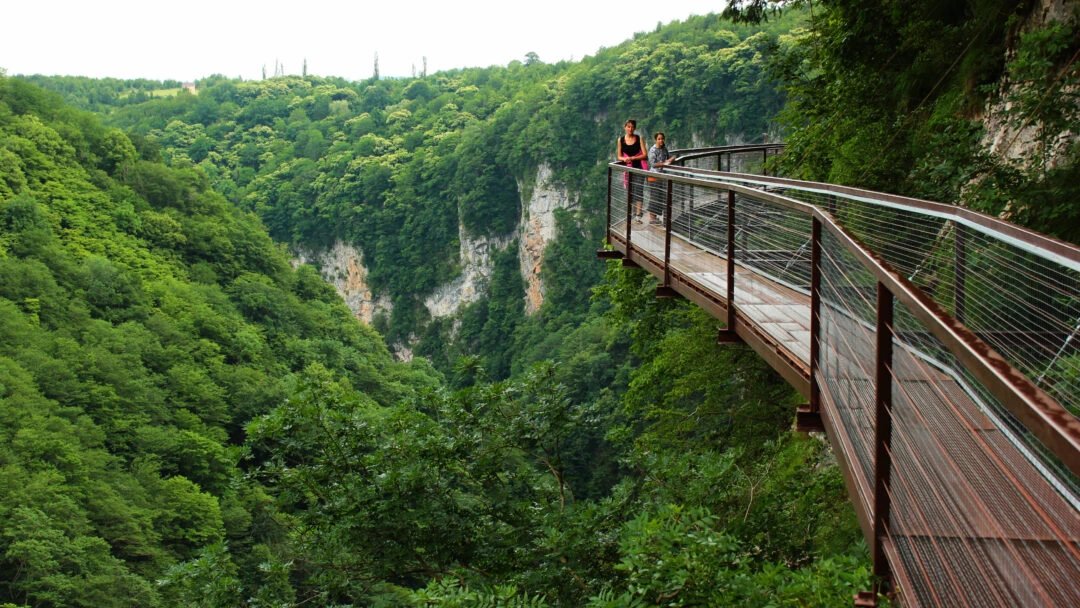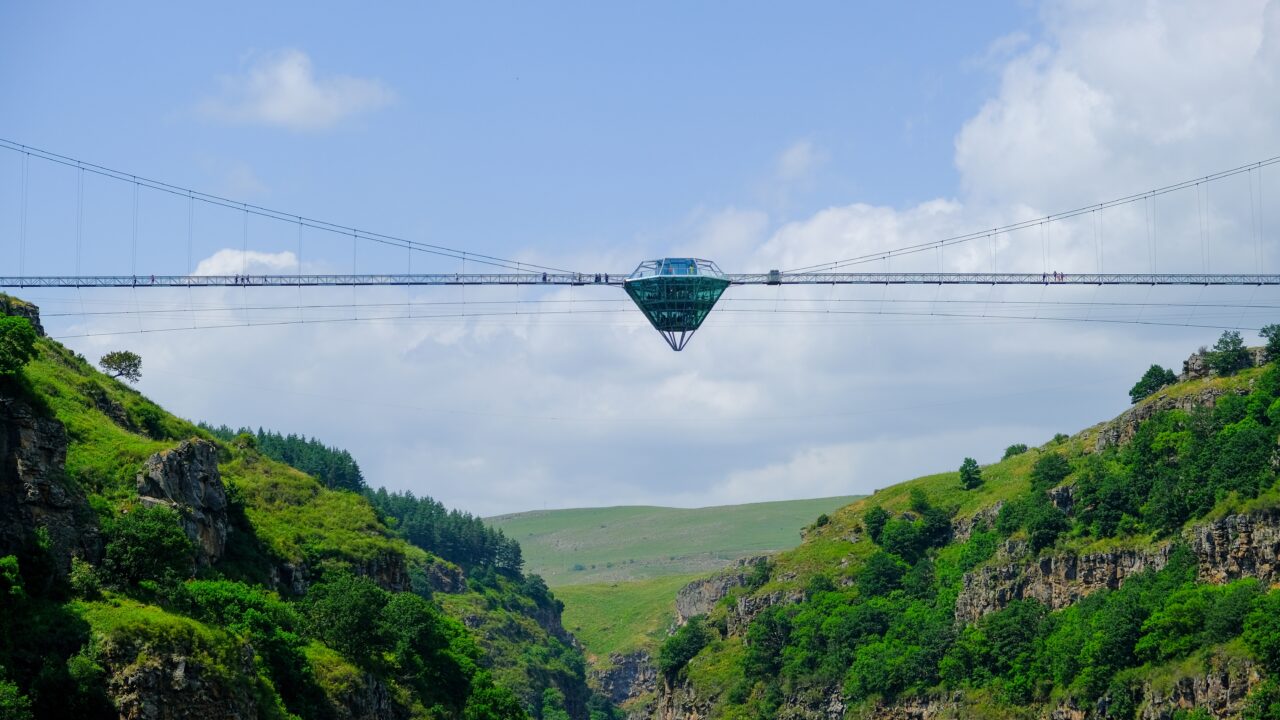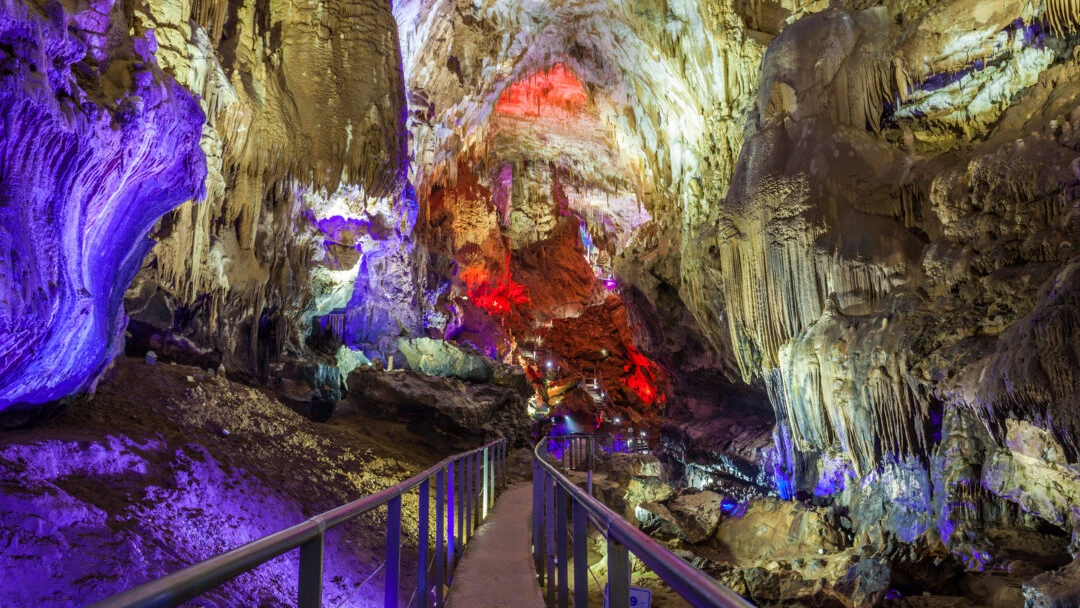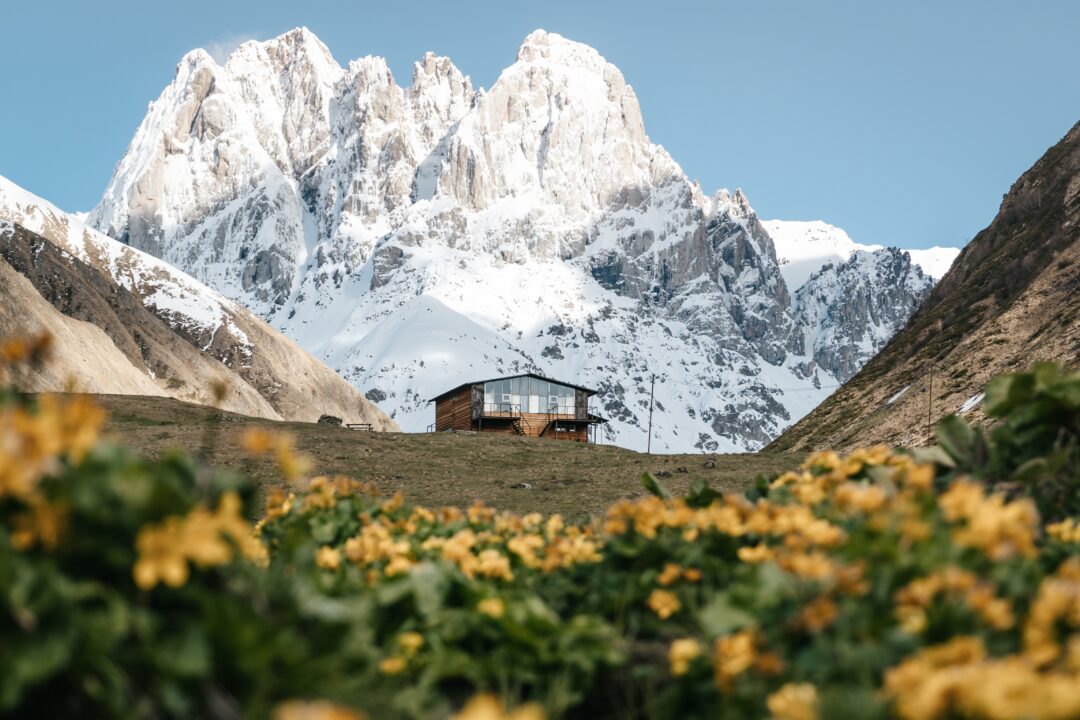Georgian Food That You Must Not Miss
Due to its location, situated at the crossroads between the East and West, Georgia has fallen within the orbit of many cultural influences and empires. As one of the earliest Christian civilizations, Georgia has endured its share of invasions and its cuisine is well reflective of its past. Throughout the centuries, Georgian food has been influenced by the Mediterranean world, Arab and Mongol flavors, Persian and Ottoman kitchens, the link stretching as far as Northern India. Every region has its own distinctive dish, but some are spread across the country and have become major tourist attractions.
Khinkali

Photo Source: Food Fun Travel
A popular dumpling made with a variety of fillings. In the mountains, this much praised dish is made with lamb, which comes in abundance, elsewhere, a mixture of minced beef and pork is used.
Adjaruli Khachapuri

Photo Source: Georgian Journal
Khachapuri is by far the most authentic Georgian dish. Almost all regions have their own Khachapuri, but the most distinguished one is Adjaruli Khachapuri. Adjara is a seaside region, therefore the inspiration of the shape of their Khachapuri comes from the sea. Many say it resembles the shape of a boat. Inside this boat shaped dough there is melted cheese, some butter and an egg. The entire yolk of the egg, which floats in the cheese, signifies a sunset in the sea. When eating Adjaruli Khachapuri you should first mix the cheese, egg, and butter well. You can then start to tear pieces of the baked dough starting from the outer corners and use them to soak up the mixture. When you have eaten the sides and corners of the boat, you can roll the bottom as a tube and eat it. Even the smallest Adjaruli khachapuri is a challenge to eat due to its richness, but it will be hard to stop as the taste is so flavorful.
Lobio
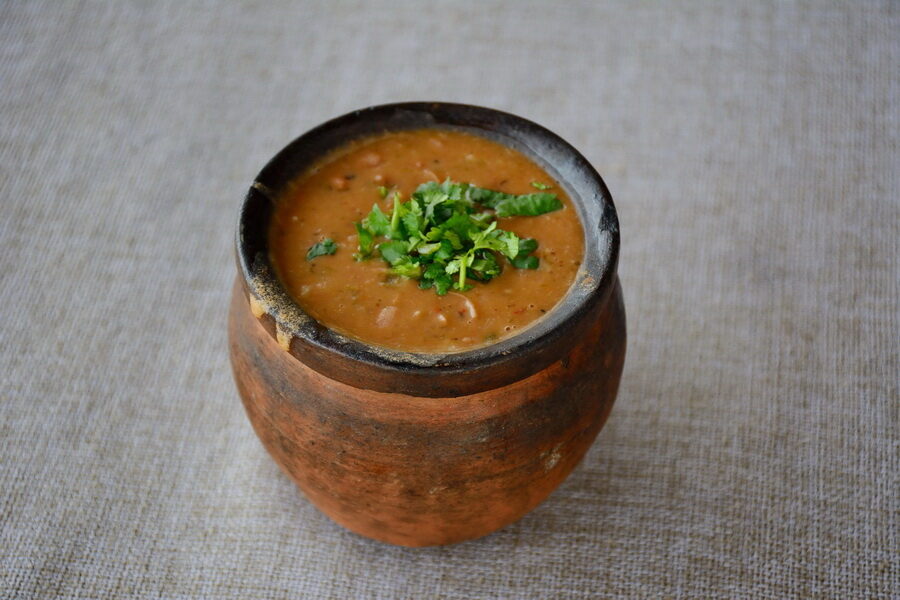
Photo Source: Advantour
Lobio is a dish consisting predominantly of beans with onion, garlic, herbs, and local seasonings and is a delicious dish! The best Lobio is prepared and served in a clay pot. You should consider ordering some pickles with it. Along with cabbage, cucumber, tomato, pepper, and other more or less familiar pickles, you can find Jonjoli – Georgian bladdernut. Jonjoli is a medium sized bush producing long stemmed flowers, which are harvested just before they flower in May and are consumed throughout the year.
Nigvziani Badrijani
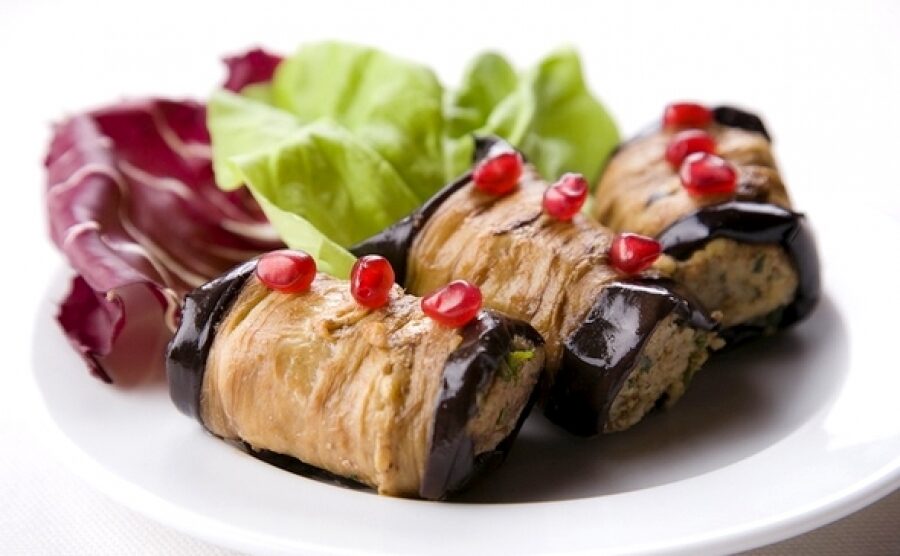
Photo Source: Georgian Journal
Eggplant with nuts. Doesn’t sound very interesting? Think again. Slices of eggplant are fried and then a mix containing nuts, cilantro (coriander) and garlic is rolled inside the slices and usually all seasoned with pomegranate. It is like nothing you have ever tried before.
Elarji
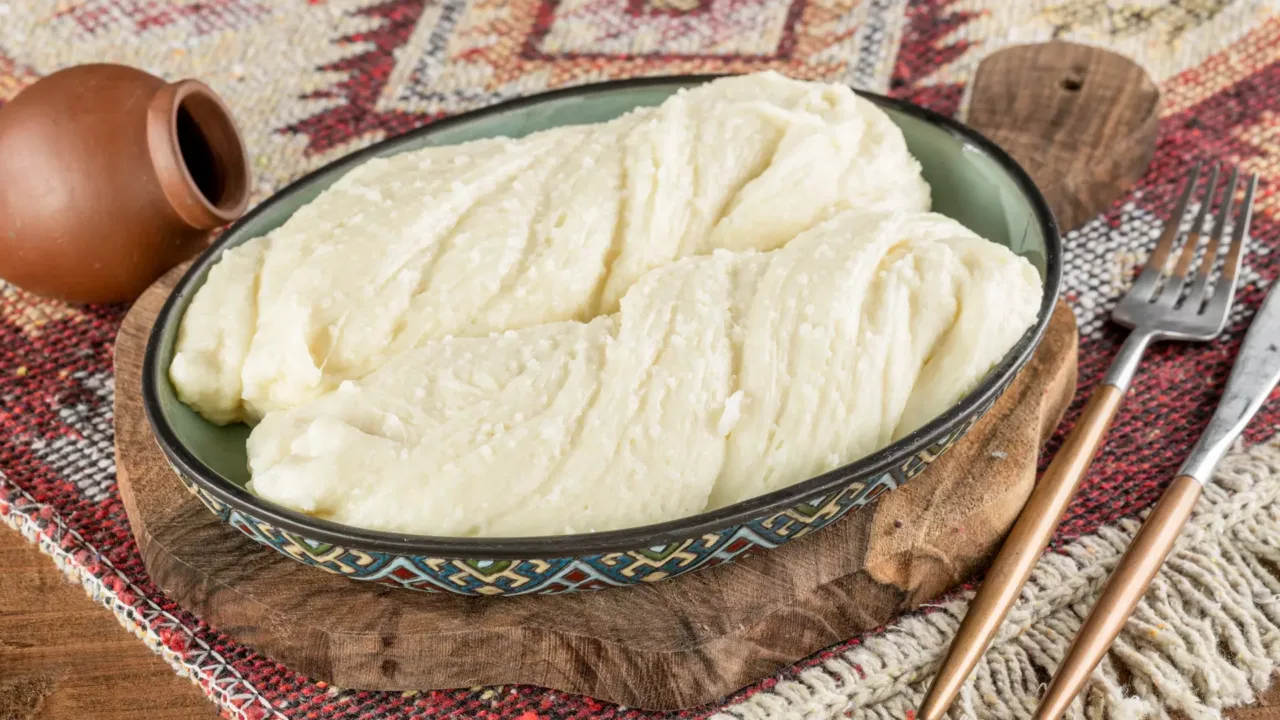
Photo Source: Georgia Travel
Samegrelo proudly bears the name of the gastronomical center of Georgia and the crown sitting on the top of Megrelian cuisine is Elarji. It is prepared with corn flour, cornmeal, and Sulguni cheese. Basically, it is Ghomi cooked with cheese. Every traditional Megrelian family has a special deep pot for Ghomi and Elarji. The cornmeal is cooked for about an hour and stirred occasionally, (so it is definitely not a fast food.) Elarji is usually served with a walnut sauce – Baje. Soft and stretchy cheese with crunchy cornmeal creates a divine dish that melts in the mouth.
Mchadi and Cheese plate
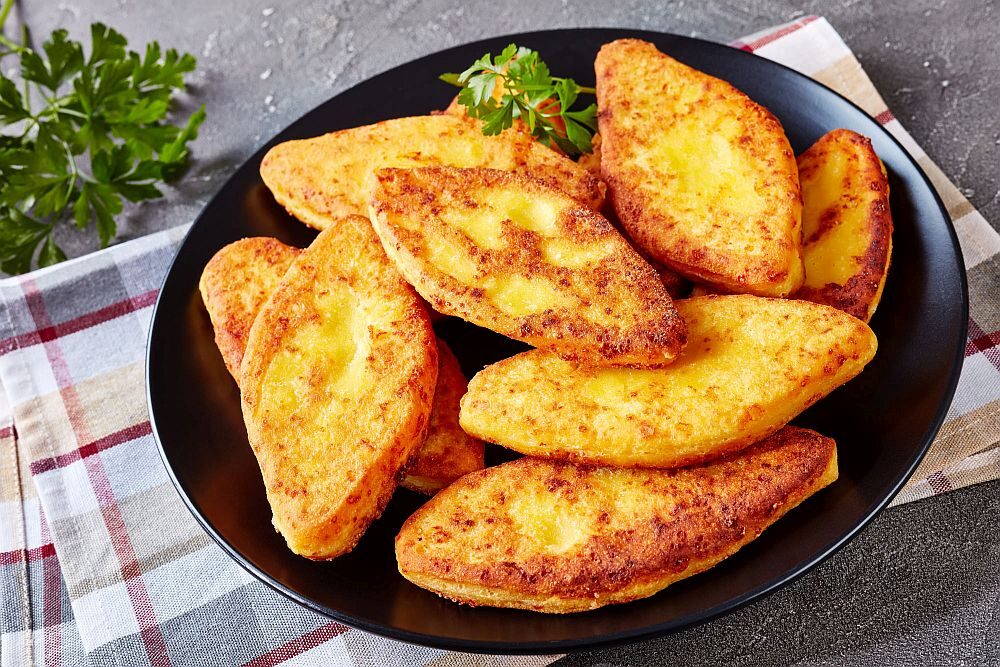
Photo Source: Caucasus Trekking
Mchadi is a local cornbread. It is simple, crispy, and tasty. It is usually eaten with cheese. Georgians rely heavily on cheese and each region makes its own variety. Among the 200 varieties found in Georgia, there are 3 which are most common:
Sulguni, which is a specialty of Western Georgia, is perhaps the most admired semi-soft Georgian cheese. Its high moisture content is reminiscent of Mozzarella.
Guda is a pungent mountain cheese from Tusheti, traditionally made with sheep’s milk and aged in sheepskin. And of course, the most popular variety – Imeruli, mildly salted white, semi-dry cheese.
Gebjalia
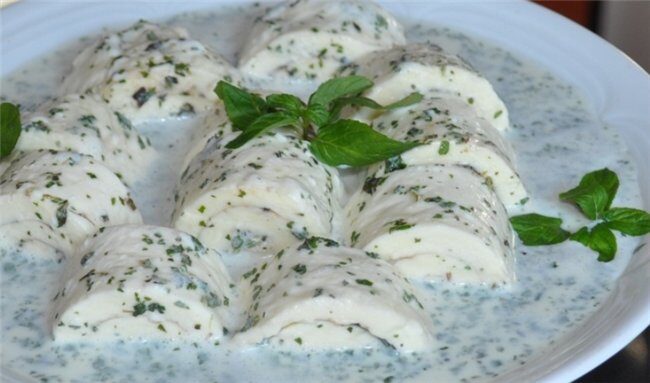
Photo Source: Georgian Journal
This dish is originally from the west Georgian region of Samegrelo and is a perfect starter. It consists of cheese rolls dipped in a mix of sour cream, milk and Nadughi – a soft, creamy cottage cheese. Rolls are flavored with mint, salt and pepper and float in the milky sauce. It is truly an authentic product of local cuisine.
Satsivi

Photo Source: Georgian Journal
Traditionally, Satsivi is made from walnuts, water, broth, garlic, and a combination of dried herbs, vinegar, cayenne pepper, and salt . Boiled turkey or chicken pieces are usually submerged in Satsivi, as this is a traditional New Year dish. For many Georgians winter holidays taste like Satsivi.
Chaqapuli
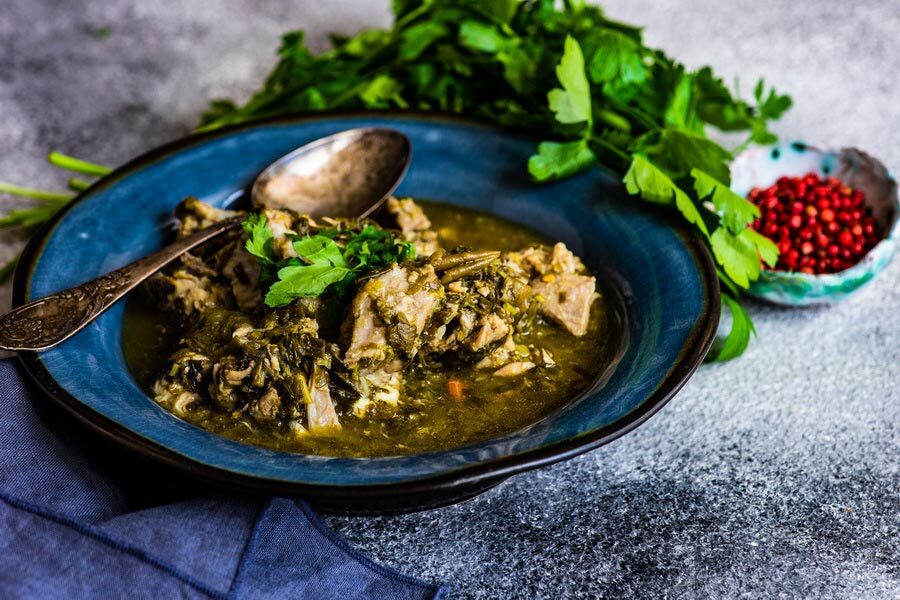
Photo Source: Advantour
Chaqapuli is a light and watery stew, redolent of springtime herbs, pungent with fruity flavors of white wine and tkemali sauce. (Tkemali sauce is a national condiment made with wild plums and aromatic herbs). Although Chaqapuli echoes some similar dishes of neighboring Iran, such as Ghormeh Sabzi, this springtime stew, for many admirers captures the essential taste of Georgia.
Churchkhela
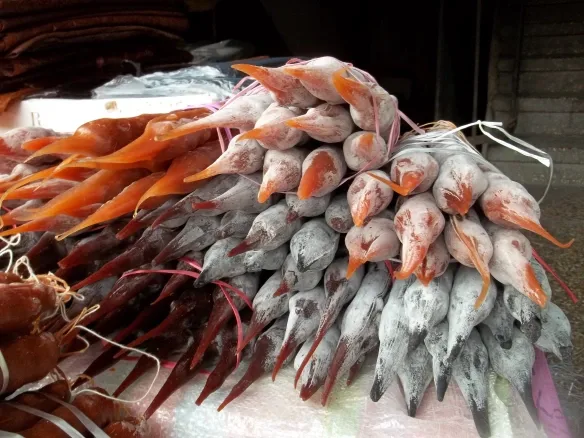
Photo Source: Georgian Recipes
This is perhaps the only dessert with a piece of cotton thread inside. With the help of a needle, halves of several walnuts or full hazelnuts are threaded onto a piece of cotton. Flour, sugar or honey, and grape juice are mixed on a high heat, into which these strands of threaded nuts are placed inside and coated. The strands then need several days to dry well in the sun before they can be enjoyed. Churchkhela can be stored for several months. Older ones are well dried and mature but the new ones are soft and juicy. Every type is delicious, just don’t forget to pull the thread out.
We created Memo — a brand where Georgian memories come to life.
Visit Memo By GSH and take a piece of Georgia with you – Www.memories.ge



